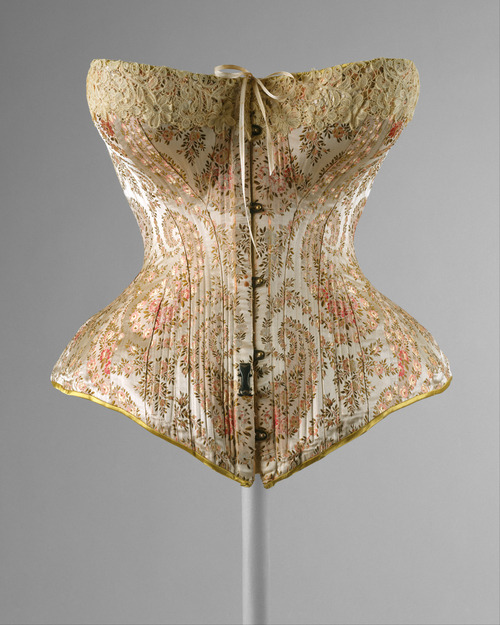antiquatedfashions:Corset by Maison Léoty France, 1891In the eighteenth century, the cors
antiquatedfashions: Corset by Maison Léoty France, 1891 In the eighteenth century, the corset imposed a more-or-less conical configuration to the upper torso. By the late nineteenth century, a more softly rounded female form was preferred. This extended even to the body in profile. The straight and rigid busks of the eighteenth century gave way to busks that not only curved into the waist but also rounded out over the belly. The imposition of the extremely small waist without the assistance of overly voluminous skirts was made possible by continuing advances in corsetry. In the late 1860s, a steam molding process was introduced wherein a garment would be starched and dried on a metal mold. The spoon busk came into use in 1873. Even elastic was being used sparingly in late nineteenth-century corset making. The result of all the technology bearing down on the woman’s waist was that by the end of the nineteenth century, the compression possible was considerable. This led to a controversy over the health effects of the corset. Although most of the negative effects were probably experienced only by women who engaged in extremely tight lacing, the reputation of the corset as a dangerous article of clothing remains. Consequently, it has been used by numerous twentieth-century scholars as a metaphor for the nineteenth-century oppression of women. -- source link
Tumblr Blog : antiquatedfashions.tumblr.com
#reblog#archives
